You will love this 10-minute Mediterranean bean salad recipe! An easy-to-make, refreshing bean salad, Turkish “piyaz” is all vegan and full of fresh herbs & vegetables. Perfect for busy days when you still want a healthy—yet delicious—meal!

Jump to:
🇹🇷 What is Turkish Piyaz
Turkish piyaz (PEEH - yuz) is a white bean salad made with raw onions, tomatoes, fresh herbs, olive oil, and often sumac.
I grew up eating it alongside kebabs in Turkey, but it makes a perfect main dish on its own!
Piyaz can also be found in other countries such as Iraq or Iran, and it means onion in Persian! This actually makes a lot of sense, because as you'll soon find out—this salad has A TON of raw onions...
If that sounds awful, don't despair. The thinly slices raw onions make it so flavorful without overpowering the taste buds.
Unless you've had piyaz before, this will likely be an eye-opening experience for you since it is strangely so unique!
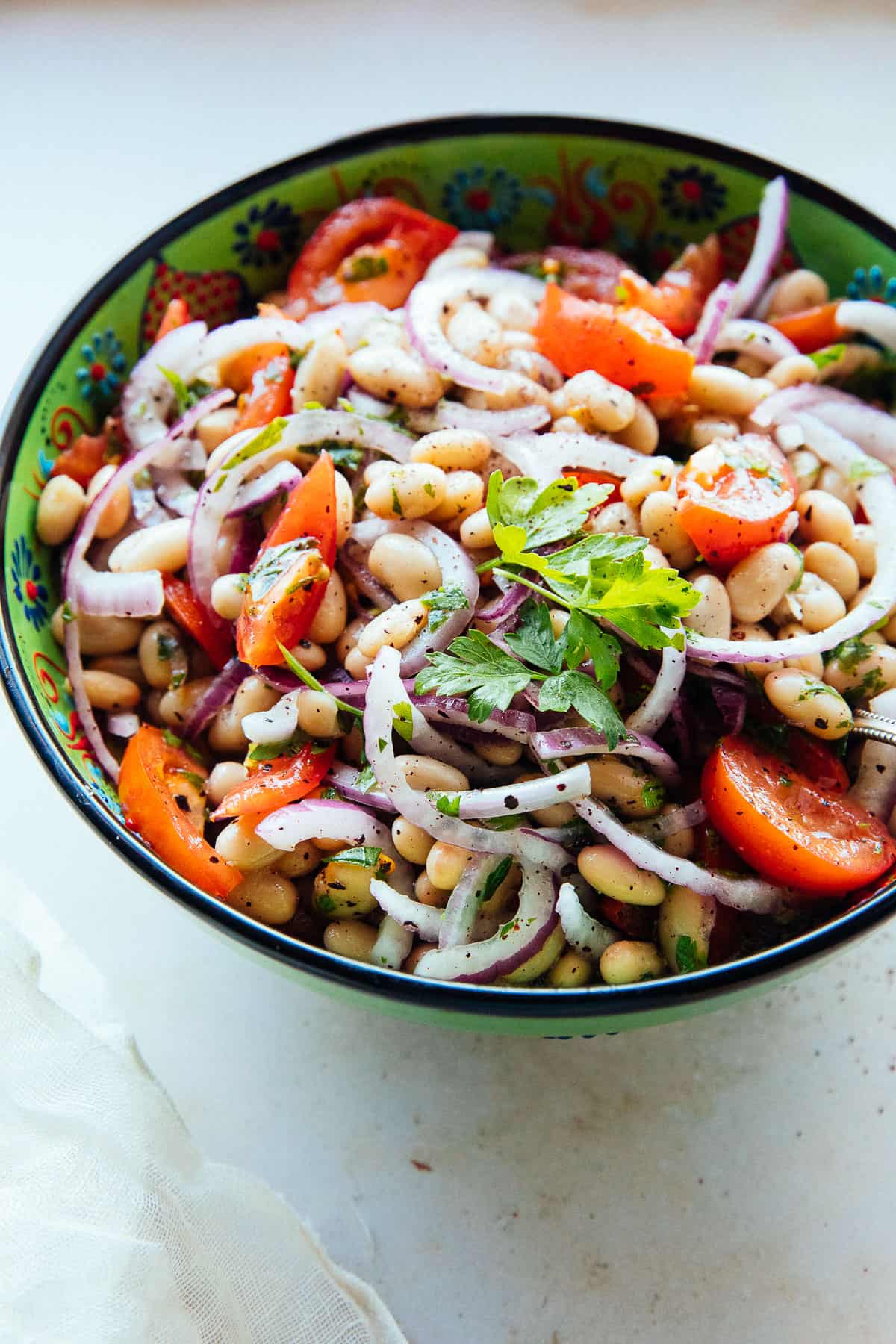
🫘 Ingredients for the Mediterranean Bean Salad
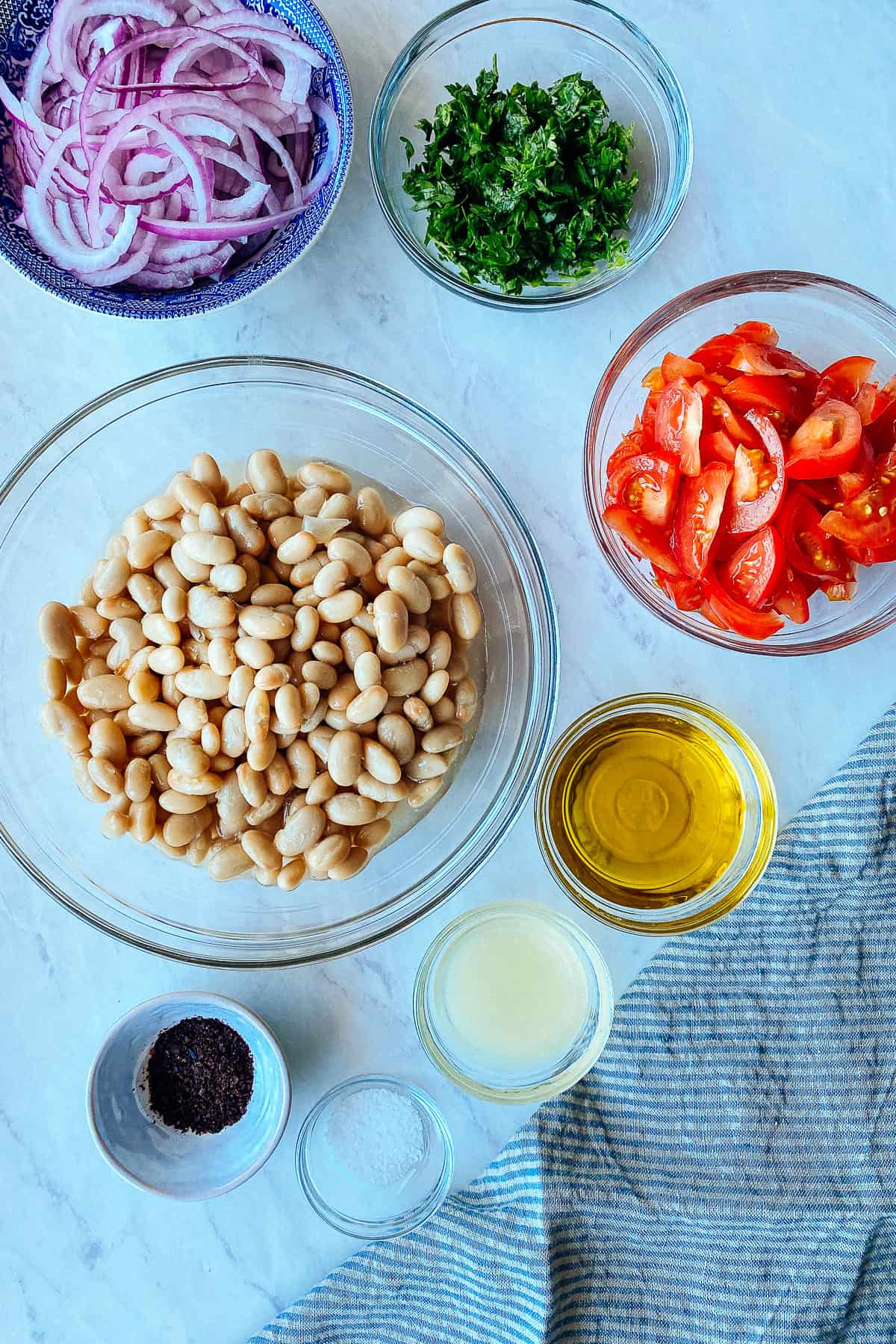
White Beans
Piyaz is traditionally made with Turkish “dermason” beans but you could use any white bean you like! I usually make it with Great Northern or cannellini beans.
Room-temperature beans are completely fine, but I like to keep a few cans in the refrigerator so that we can make a colder salad in no time!
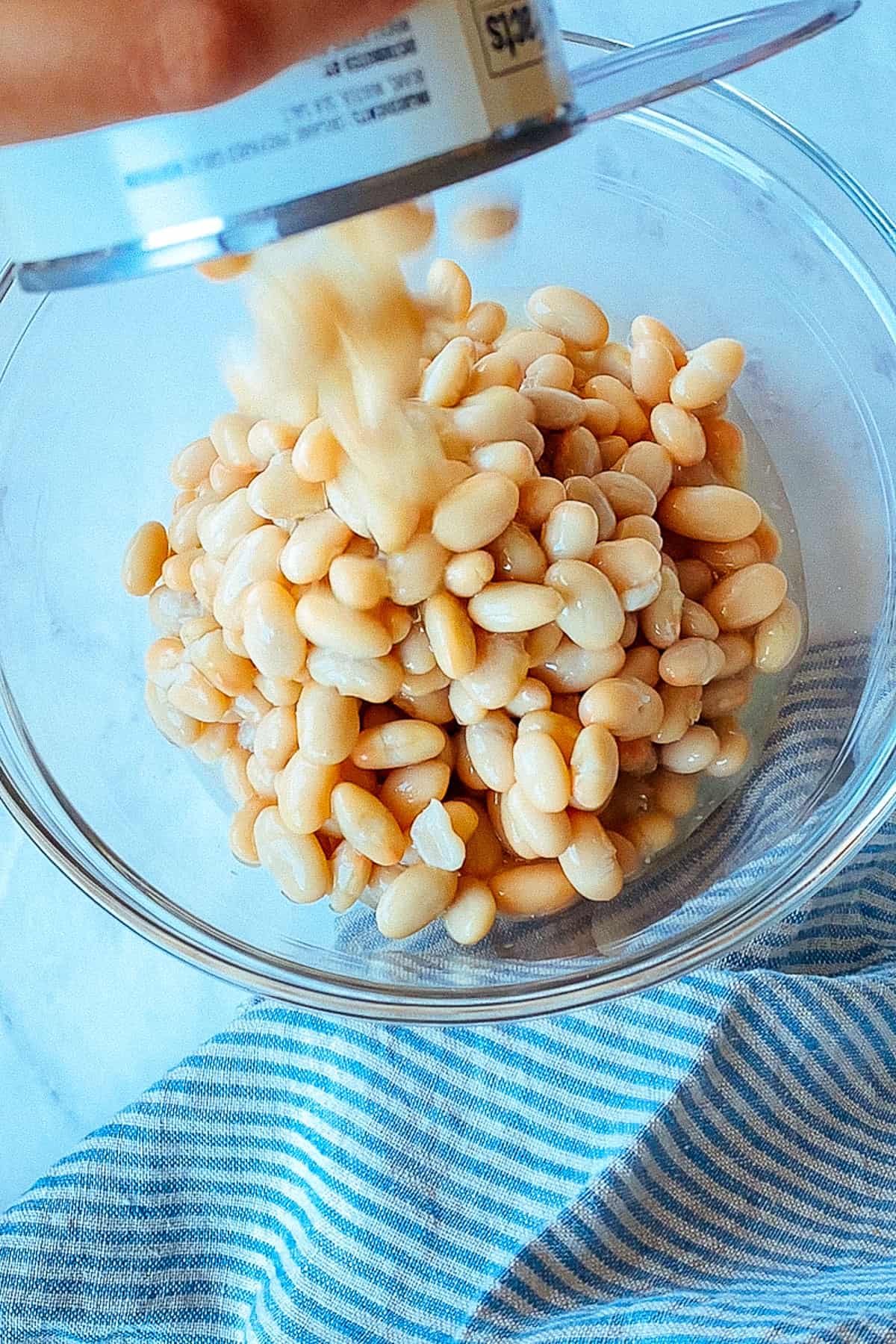
We'll also be using a little bit of the aquafaba (i.e. bean liquid) from the white beans, so make sure to save some of it!
It will help us emulsify the dressing better, and impart a deeper flavor to an otherwise simple dish.
Tomatoes
The more flavorful tomatoes you use, the more delicious this salad will turn out! I love using campari or heirloom varieties in piyaz.

I wouldn't recommend any type of canned or bottled tomatoes for this.
Fresh Herbs
Flat-leaf (Italian) parsley is the most common herb used in piyaz, but feel free to change it up and swap it with your favorites!
A bit of cilantro or mint would suit it well, and you could even add some baby greens to up the nutrition value further!
❗️ Here's a quick tip on Turkish cuisine—we don't really differentiate between "herbs" and "greens"! As in, people don't see a difference between a bowl of lettuce and a salad made completely of parsley.
That's why you'll often find Turkish "salads" using very high amounts of herbs.
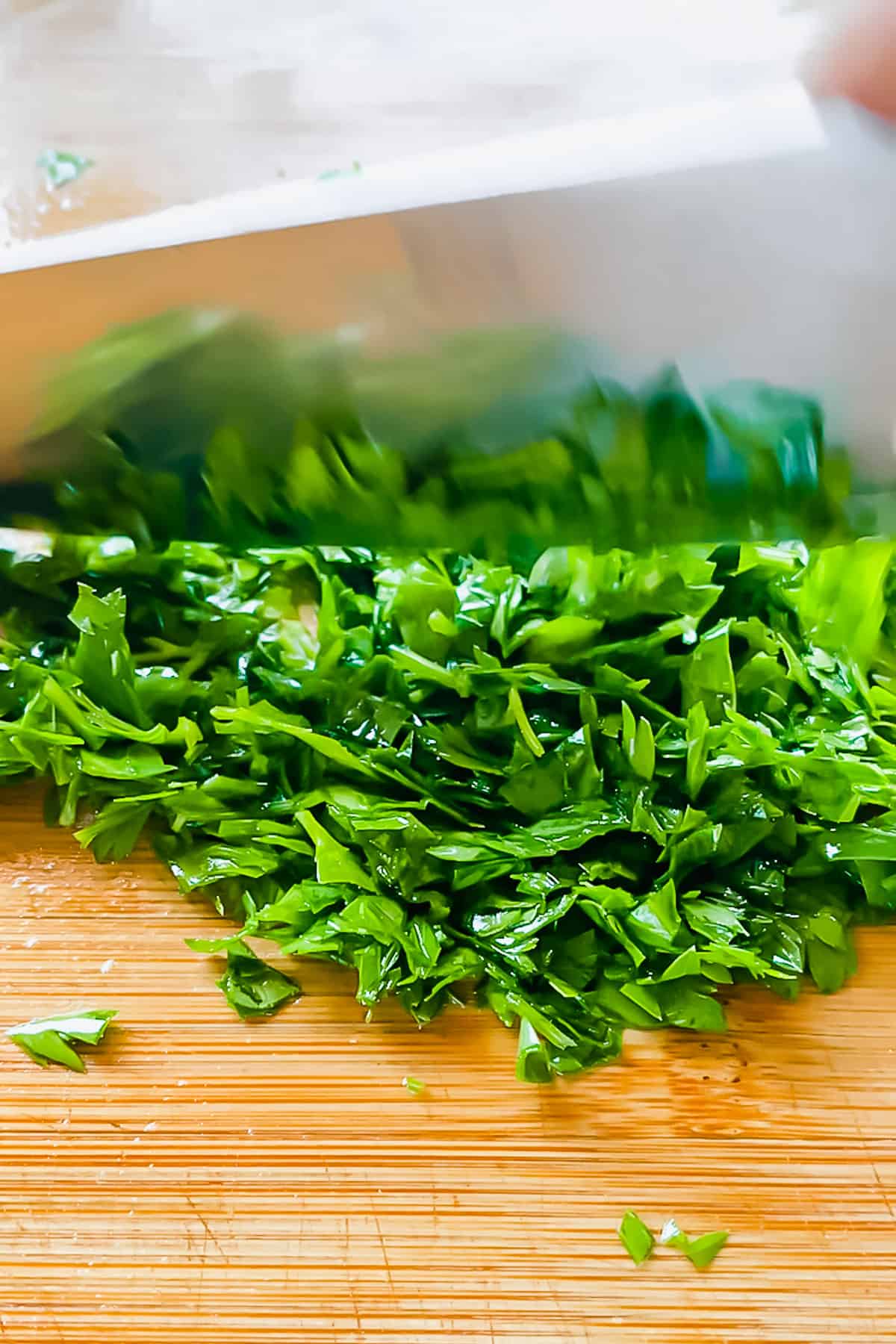
Dressing
A simple combination of lemon juice, olive oil (preferably extra-virgin), and bean liquid is all you need.
You could make the dressing in a separate bowl ahead of time, but don’t have to. The bean liquid really helps with emulsifying the olive oil even when added separately!
Sumac

If you haven't had sumac before, you're in for a surprise! It is a citrusy, tangy spice from the cashew family and my favorite thing to add to salads.
Goes so well in cig kofte (Turkish raw vegan meatballs) as well.
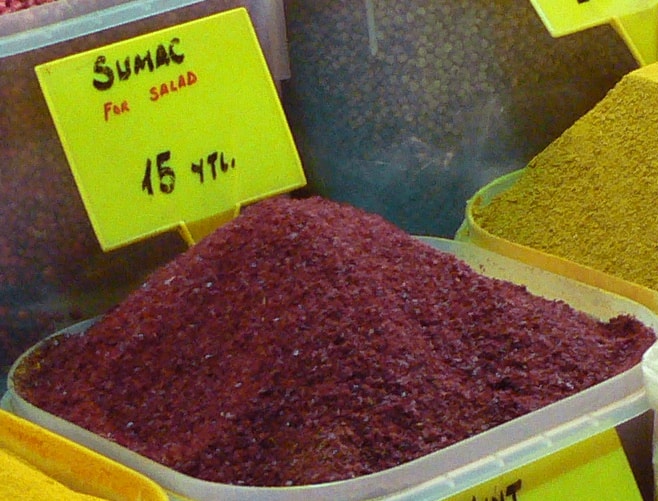
In case you don't have any on hand, though, just add more lemon juice to substitute for its acidity.
and... Onions!
Piyaz definitely needs to have some raw onion! The tahini-based Antalya piyaz is made with white onion, but regular piyaz is made with the red variety.
You may certainly substitute one for the other as the difference is minimal.
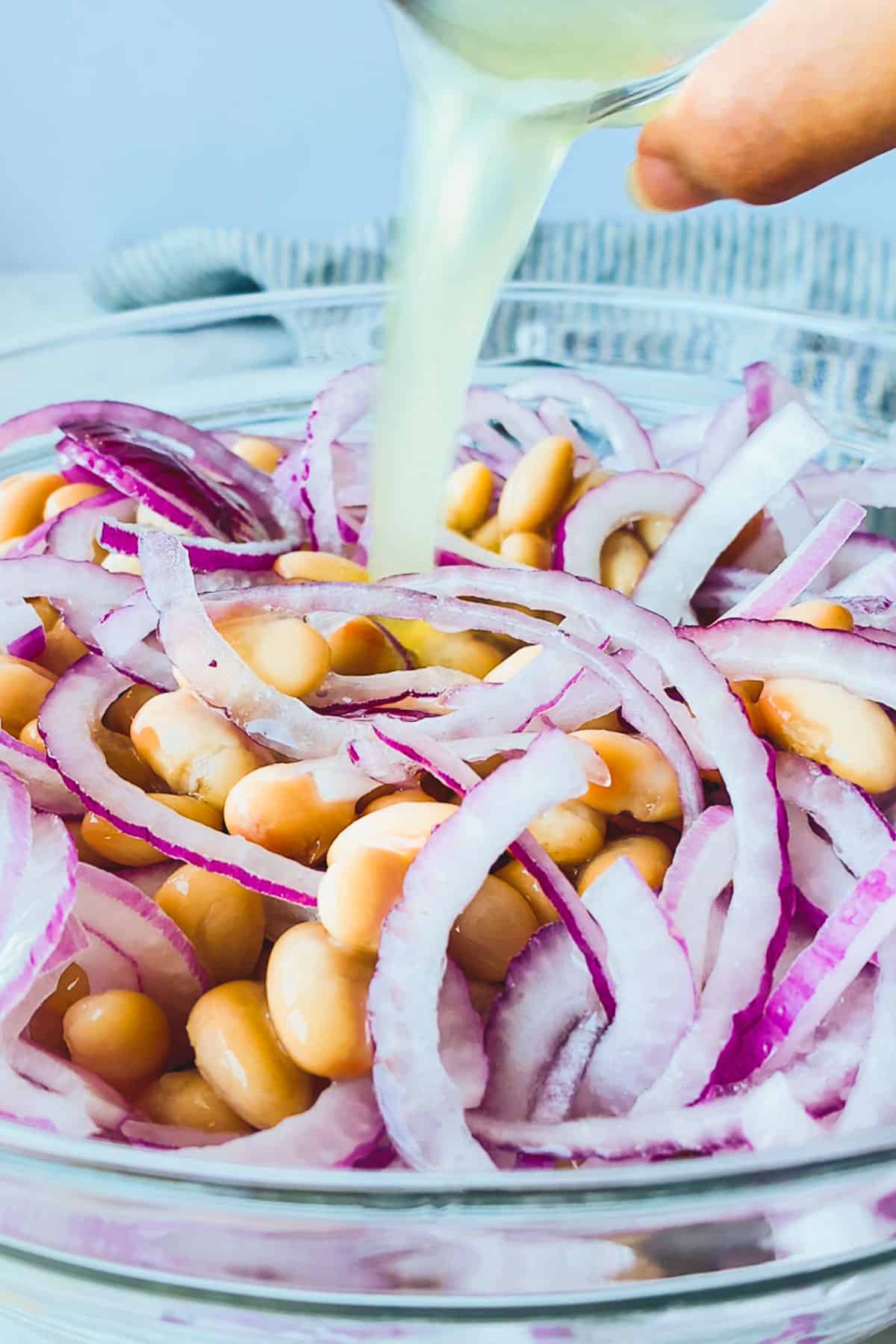
Whichever type of onion (or shallot, if you like!) you choose, you should definitely pay attention to the way you slice it.
Because we're having the onions raw, we want those thin slices to be as robust as possible. Below is a guide on how to achieve this.
🧅 Slicing Onions for a Salad
Whenever you intend on serving onions raw in a dish, make sure to slice them lengthwise, as in, root-to-stem! Just take a look at the difference:

This is because an onion's layers of plant cells run from the root to the stem! So the fibers are torn apart when you cut across them along the onion's equator.
This results in soft pieces that are perfect for purees or soups, but not ideal for caramelizing or serving raw.
Besides... more damaged onion cells mean more lacrimator—the stuff that makes your eyes water. When exposed to air, lacrimator breaks down into hydrogen sulfide, sulfur dioxide, and sulfuric acid.
One effective method against those tears is to chill the whole onions in ice water 30-60 minutes prior to chopping them. This lowers enzymes' activity and makes it harder for the chemicals to become airborne.
Luckily, I don't get affected by onion tears at all and never do this, but it might be helpful to you or people you know who hate chopping onions 🙂

There's one last tip... have you ever had leftovers that had raw onions? Did you notice how harsh those onions tasted?
According to Harold McGee, that's because the sulfur compounds in an onion become more intense with time and exposure to air! So if you want to remove all the sulfur from a chopped onion's damaged surfaces, simply rinse them.
📝 Instructions for Piyaz
Whenever I say it’s a 10-minute recipe—it truly is! You just need to dice or slice a few vegetables and toss everything into a bowl:

- Place canned white beans along with some of their liquid into a large bowl.
- Add the onion slices (chopped lengthwise), lemon juice, olive oil, salt, and sumac; then mix.
- Add the diced tomatoes and parsley, and lightly toss. Taste and season again if needed. Toast a slice of bread on the side or add your favorite grain to make a complete Buddha bowl. Bon appétit!
⏳ Saving the Bean Salad
You may save this Mediterranean bean salad in an airtight container in the refrigerator for up to 3 days.
Note that each passing day will make the raw onions taste harsher, so if you don't plan on eating the salad right away—make sure to rinse and pat dry the sliced onions to remove sulfur compounds.
You may be able to get away with saving it for 5 days when you apply that step!
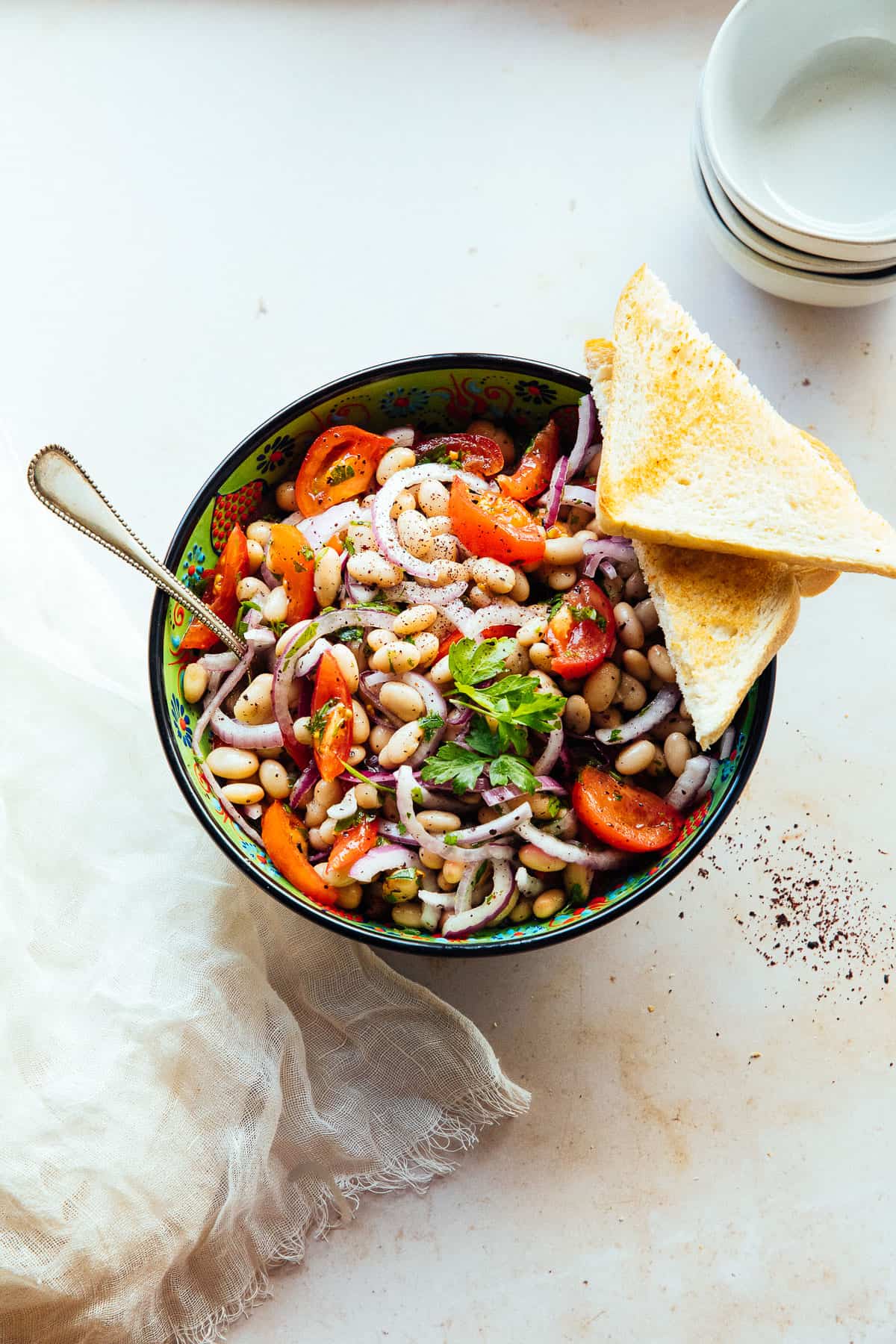
❓ Piyaz FAQs
Turkish piyaz (PEEH - yuz) is a white bean salad made with raw onions, tomatoes, fresh herbs, olive oil, and often sumac.
Piyaz can also be found in Turkey, as well as other countries such as Iraq or Iran, and it means onion in Persian!
Piyaz is traditionally made with Turkish “dermason” beans but you could use any white bean you like! Try it with Great Northern or cannellini beans.
Piyaz tastes best with sumac, but feel free to substitute for it by using slightly more lemon juice to balance the acidity.
Whenever you intend on serving onions raw in a dish, make sure to slice them lengthwise, as in, root-to-stem! This is because an onion's layers of plant cells run from the root to the stem. So the fibers are torn apart when you cut across them along the onion's equator. This results in soft pieces that are perfect for purees or soups, but not ideal for caramelizing or serving raw.
Absolutely! You may save it in an airtight container in the refrigerator for up to 3 days. Note that each passing day will make the raw onions taste harsher, so if you don't plan on eating the salad right away—make sure to rinse and pat dry the sliced onions to remove sulfur compounds. You may be able to get away with saving it for 5 days when you apply that step!
🥗 Other Healthy Recipes on AD
Check out some of these other healthy recipes full of flavor! The salad with warm dates is what I do with kale 90% of the time, and the Turkish lentil balls never disappoint...

Did you make this Mediterranean Bean Salad? I'd love to hear about it! Please comment and leave a star🌟 rating below. This helps me run Aegean Delight and I always appreciate it 🙂
Print📖 Recipe

Mediterranean Bean Salad (Ready in 10 Minutes!)
- Total Time: 10 minutes
- Yield: 4 Servings 1x
- Diet: Vegan
Description
You will love this 10-minute Mediterranean bean salad recipe! An easy-to-make, refreshing bean salad, Turkish “piyaz” is all vegan and full of fresh herbs & vegetables. Perfect for busy days when you still want a healthy—yet delicious—meal!
Ingredients
- 2 15-oz cans (500g beans without liquid) white beans (See Notes)
- 2 tablespoons of bean liquid (from can or homecooked broth)
- ½ large (200g) red onion (⅛-in, root-to-stem slices)
- 1 ½ tablespoons lemon juice
- 3 tablespoons olive oil
- ¼ teapoon salt
- 1 tablespoon sumac (or use 1 teaspoon more lemon juice)
- 2 large (200g) fresh tomatoes, diced
- 1 bunch (30g) of parsley leaves, minced
Instructions
- Place canned white beans along with some of their liquid into a large bowl.
- Add the onion slices (chopped lengthwise), lemon juice, olive oil, salt, and sumac; then mix.
- Add the diced tomatoes and parsley, and lightly toss. Taste and season again if needed.
- Toast a slice of bread on the side or add your favorite grain to make a complete Buddha bowl. Bon appétit!
Notes
1. Bean Weight: The listed weight of the beans excludes the bean liquid. Note that most canned beans' listed weight includes the bean liquid.
2. Bean Type: Piyaz is traditionally made with Turkish “dermason” beans but you could use any bean you like. I usually make it with Great Northern or cannellini beans.
3. Slicing Onions: Slicing onions root-to-stem, with a sharp knife, preserves cell structures and makes onions less likely to make you cry thanks to decreased sulfur compounds in the air!
4. Dressing: You could make the dressing in a separate bowl, but don’t have to. The bean liquid really helps with emulsifying the olive oil.
5. EVOO: Use the best olive oil you got! We joined an olive oil club that sends super-fresh (like 3-month-old) EVOO every quarter and it’s been heavenly.
6. Saving Piyaz: Each passing day will make the raw onions taste harsher, so if you don't plan on eating the salad right away—make sure to rinse and pat dry the sliced onions to remove sulfur compounds. You may be able to get away with saving it for 5 days when you apply this additional step!
- Prep Time: 10 minutes
- Category: Turkish, Salads, Lunch, Dinner, Healthy
- Cuisine: Turkish
Pin me for later:
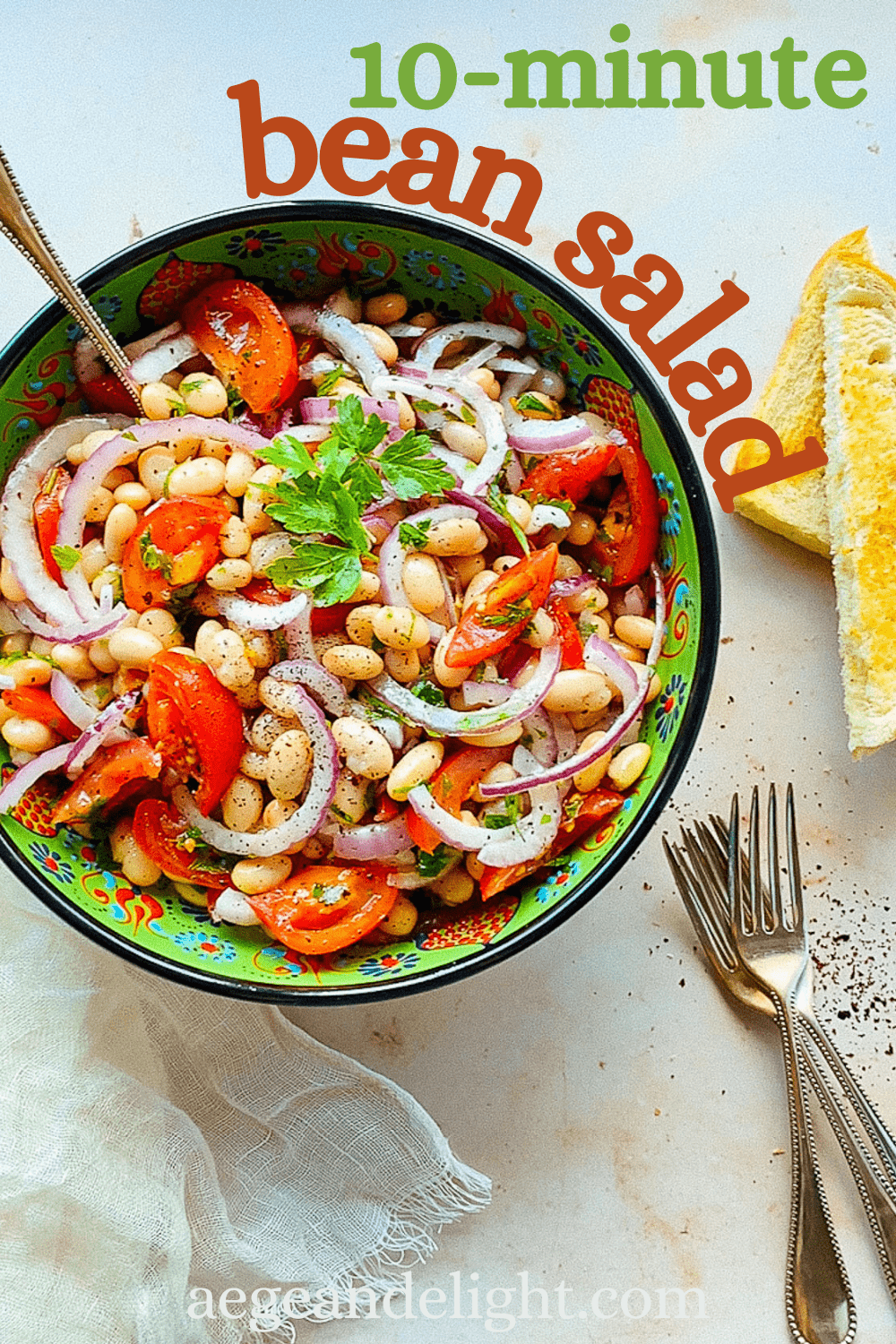



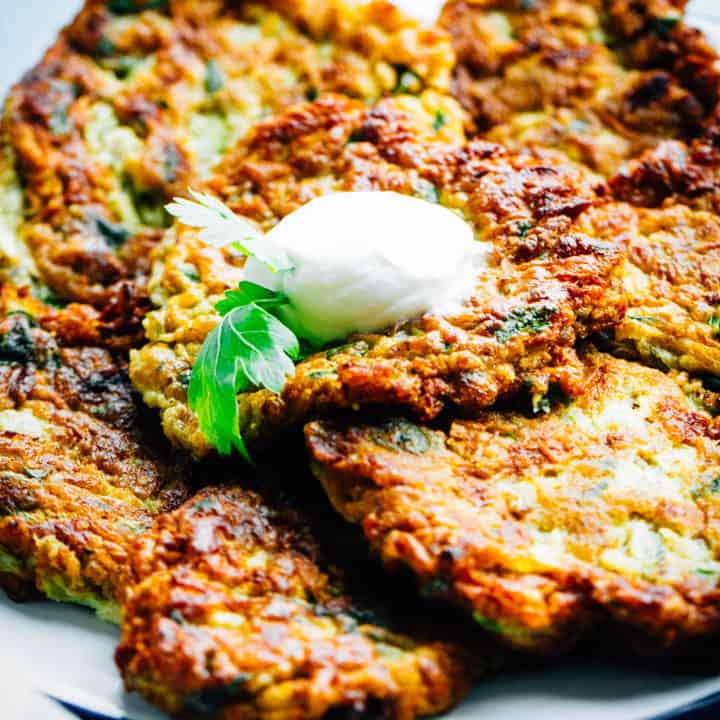

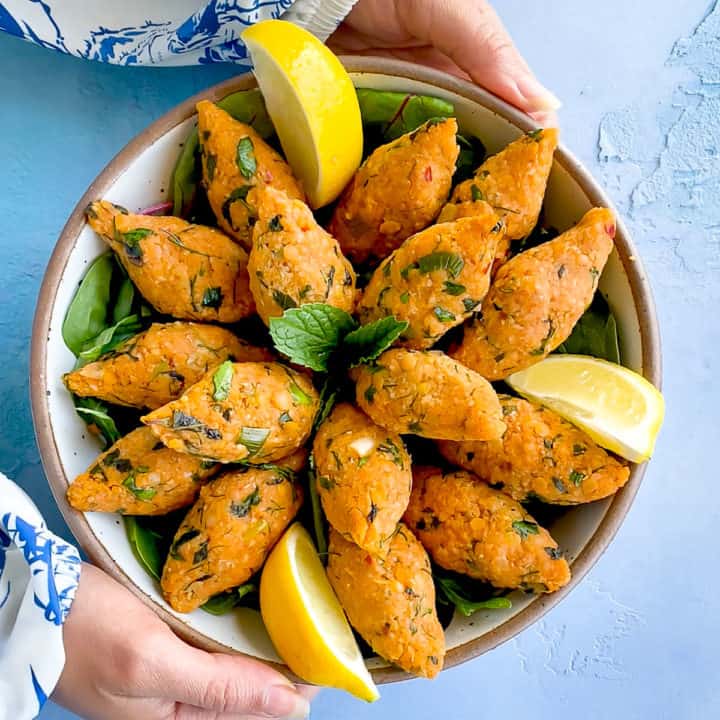

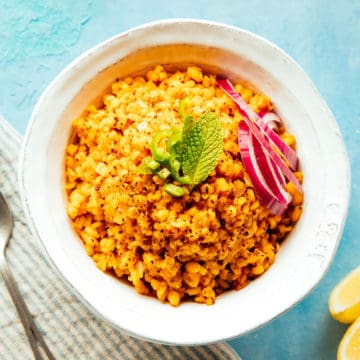

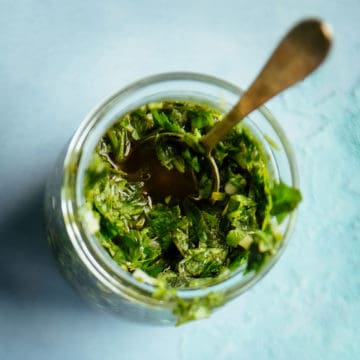

Paul Deed
Looks delicious.
Gönül
Thank you, Paul! Do let me know if you give it a try 🙂
Ida
I made it. It's as delicious as it looks!
Gönül
Thank you so much for leaving a comment, Ida! 🙂
Glad you enjoyed it!
Aliza H
Wonderful!! Added a bit of crushed garlic too, since we're suckers for garlic (& our onion was old). Wasn't necessary - flavor was AMAZING with "just" sumac, onion, tomato, lemon, etc! This is going to be my obsession this summer as tomatoes keep getting tastier. Thanks so much!
Gönül
Glad you enjoyed it! 🙂 one of my favorite meals ever, so simple!